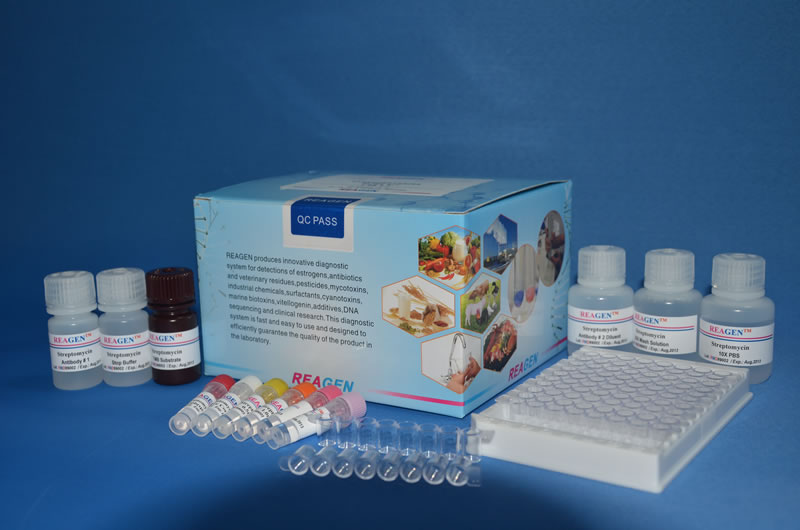p-BRK(y342), RBX-100UG
货号: 09-144 产品名称: p-BRK(y342), RBX-100UG 品牌: Millipore 规格: EA 三周到货 生化实验
Anti-phospho-Brk (Tyr342) Antibody
Close
REFERENCES
Identification of STAT3 as a specific substrate of breast tumor kinase
Liu, L, et al (2006) Oncogene, 25:4904-12 (2006)
Interaction between Brk kinase and insulin receptor substrate-4
Qiu, Haoqun, et al (2005) Oncogene, 24:5656-64 (2005)
Species Reactivity Key Applications Host Format Antibody Type
H WB Rabbit Affinity Purified Polyclonal Antibody
Description:
Anti-phospho-Brk (Tyr342) Antibody
Promotional Text:
Special Shipping Offer on Antibodies
100% Performance Guaranteed
Trade Name:
Upstate (Millipore)
Specificity:
Recognizes human phospho-Brk at tyrosine 342.
Molecular Weight:
~50 kDa
Immunogen:
KLH conjugated synthetic peptide corresponding to amino acids encompassing Tyr342 of human Brk.
Modifications:
Phosphorylation
Isotype:
IgG
Species Reactivity:
Human
Quality Assurance:
Routinely evaluated by immunoblot.
Purification Method:
Immunoaffinity purified
Presentation:
Purified rabbit polyclonal in buffer containing 0.1M Tris-Glycine (pH7.4, 150 mM NaCl) with 0.05% sodium azide.
Storage Conditions:
Stable for 1 year at 2-8°C from date of receipt.
UniProt Number:
Q13882
Entrez Gene Number:
NM_005975.2
Gene Symbol:
PTK6
BRK
FLJ42088
Alternate Names:
PTK6, protein tyrosine kinase 6, breast tumor kinase, protein-tyrosine kinase BRK
Usage Statement:
Unless otherwise stated in our catalog or other company documentation accompanying the product(s), our products are intended for research use only and are not to be used for any other purpose, which includes but is not limited to, unauthorized commercial uses, in vitro diagnostic uses, ex vivo or in vivo therapeutic uses or any type of consumption or application to humans or animals.
View All »
Key Applications:
Western Blotting
Entrez Gene Summary:
The protein encoded by this gene is a cytoplasmic nonreceptor protein kinase which may function as an intracellular signal transducer in epithelial tissues. Overexpression of this gene in mammary epithelial cells leads to sensitization of the cells to epidermal growth factor and results in a partially transformed phenotype. Expression of this gene has been detected at low levels in some breast tumors but not in normal breast tissue. The encoded protein has been shown to undergo autophosphorylation.
View All »
UniProt Summary:
FUNCTION: SwissProt: Q13882 # Phosphorylates KHDRBS1, KHDRBS2, KHDRBS3 and STAP2/BKS. May function as an intracellular signal transducer in epithelial tissues. Overexpression in mammary cells leads to mitogenically sensitization to EGF, and results in a partially transformed phenotype. Its presence in the nucleus appears to be linked to suppression of tumor progression.
SIZE: 451 amino acids; 51834 Da
SUBUNIT: Interacts with GAP-A.p65 (By similarity). Interacts with KHDRBS1.
SUBCELLULAR LOCATION: Cytoplasm. Nucleus. Note=Colocalizes with KHDRBS1, KHDRBS2 or KHDRBS3, within the nucleus. In secretory epithelial cells from prostate adenocarcinoma, nuclear localization is higher in low-grade and lower in high-grade regions of the tumors.
TISSUE SPECIFICITY: Epithelia-specific. Very high level in colon and high levels in small intestine and prostate, and low levels in some fetal tissues. Expressed at low level in some breast tumors, but not in normal breast. Also found in melanocytes. Not expressed in heart, brain, placenta, lung, liver, skeletal muscle, kidney and pancreas.
PTM: Autophosphorylated. The phosphorylation of Tyr-447 may lead to the autoinhibition of the enzyme.
SIMILARITY: Sw 2-8℃

